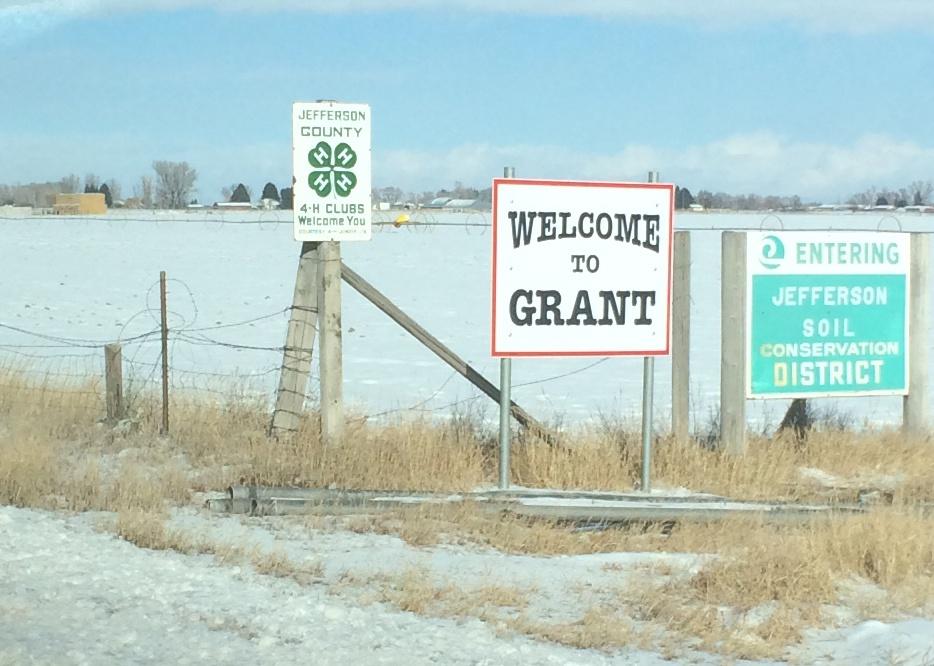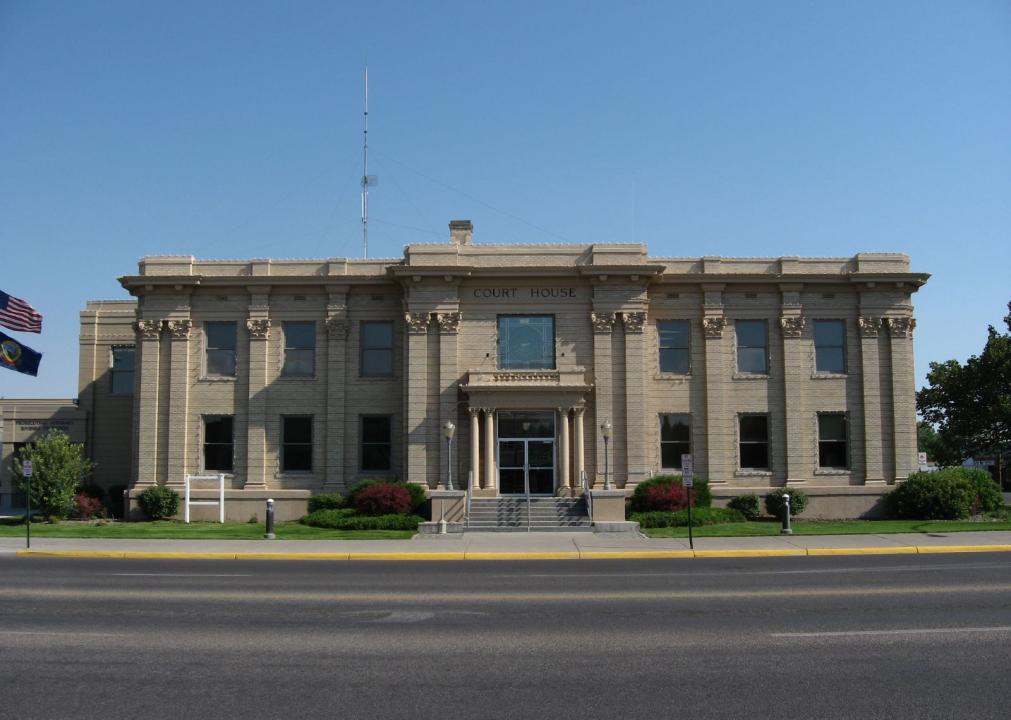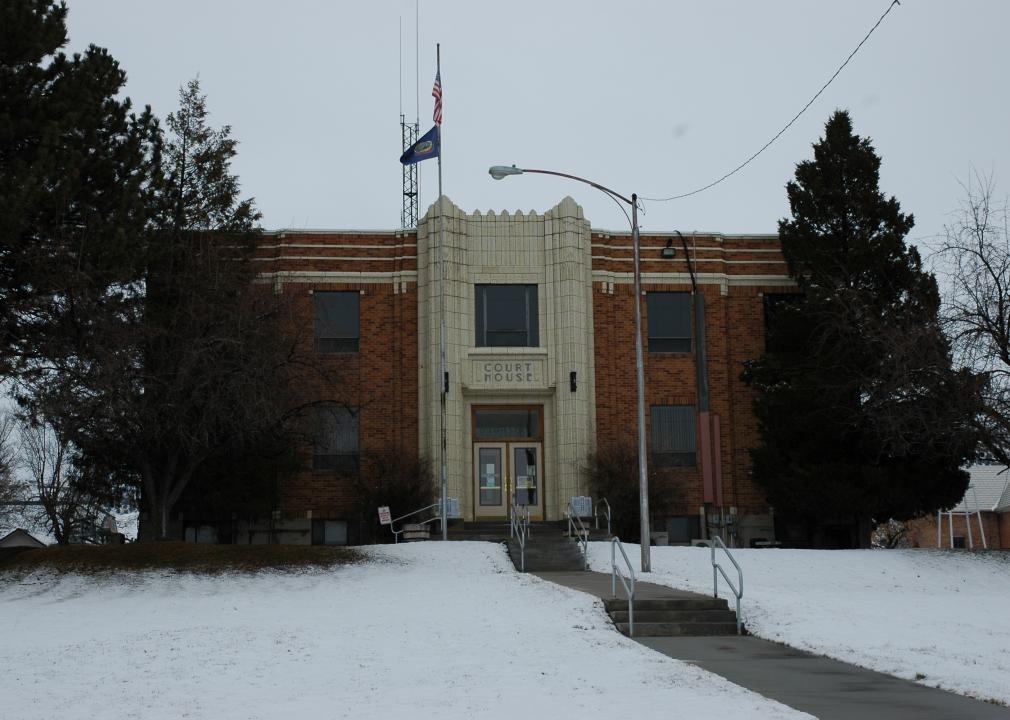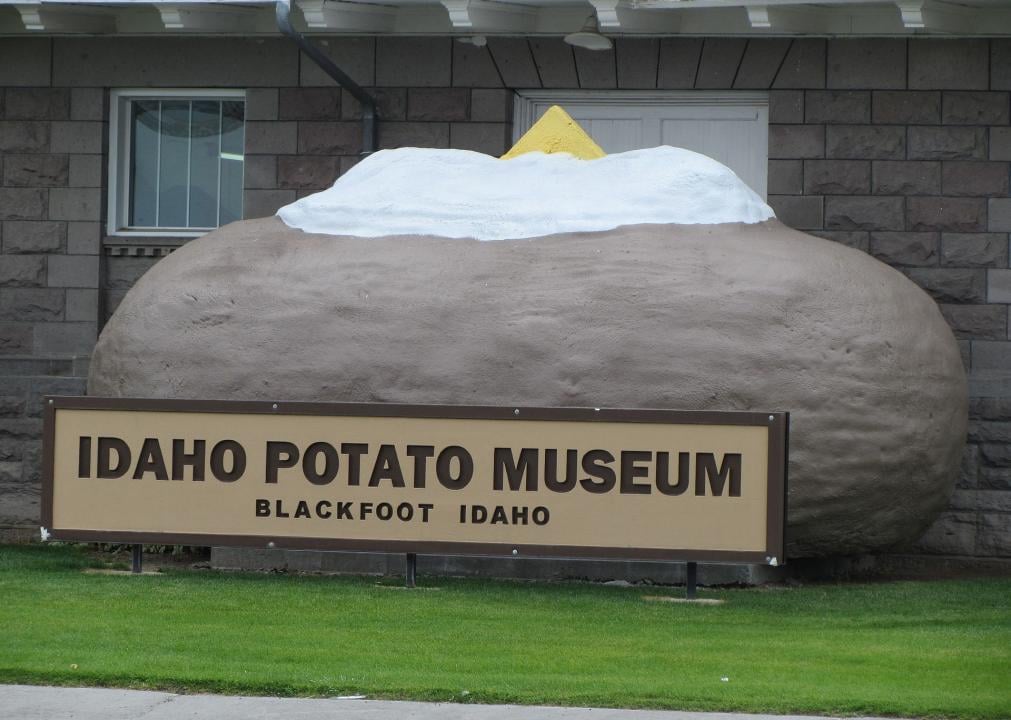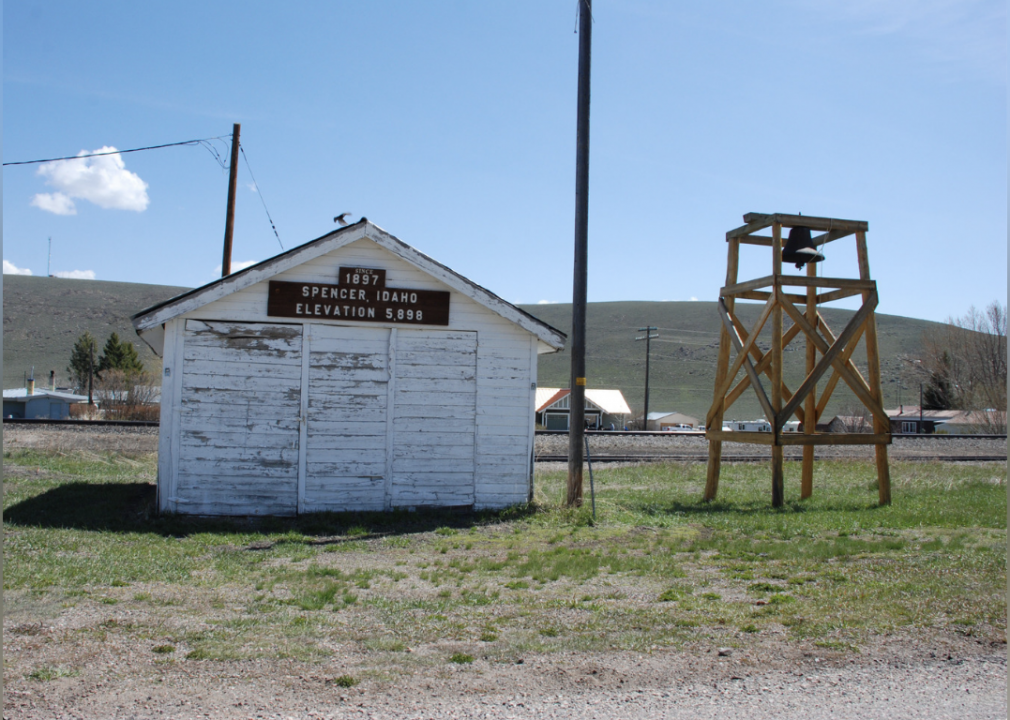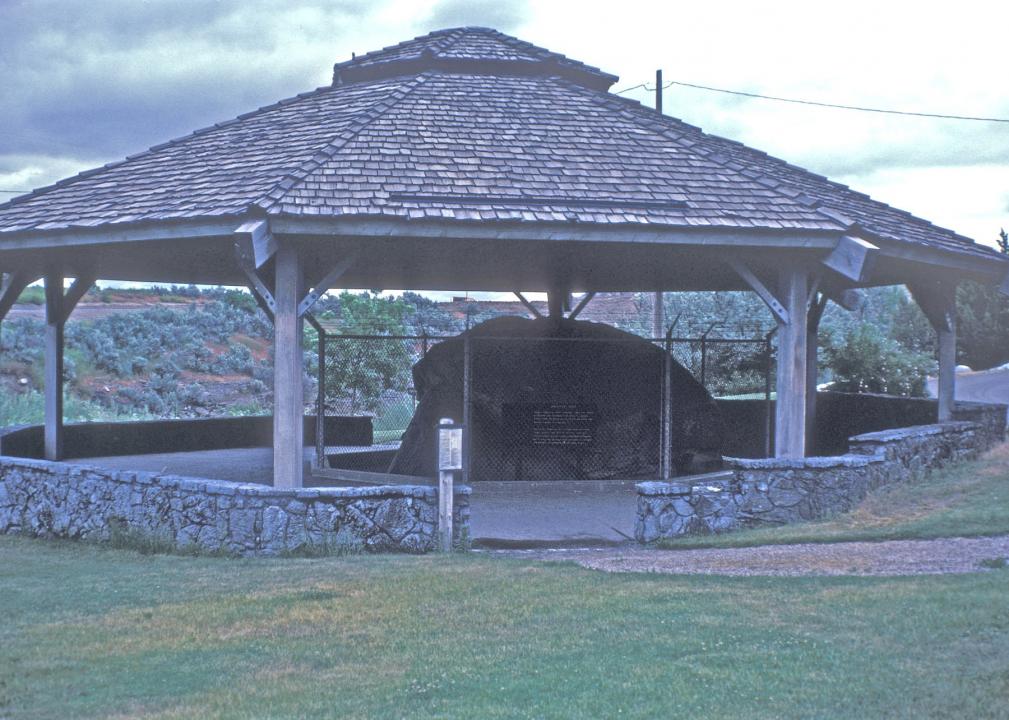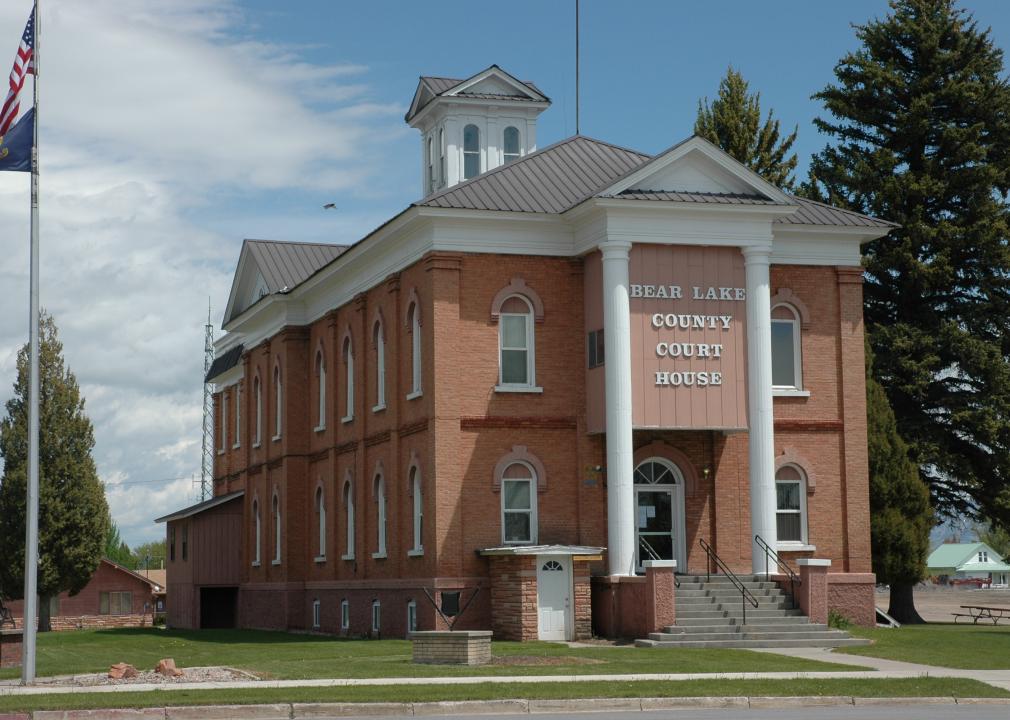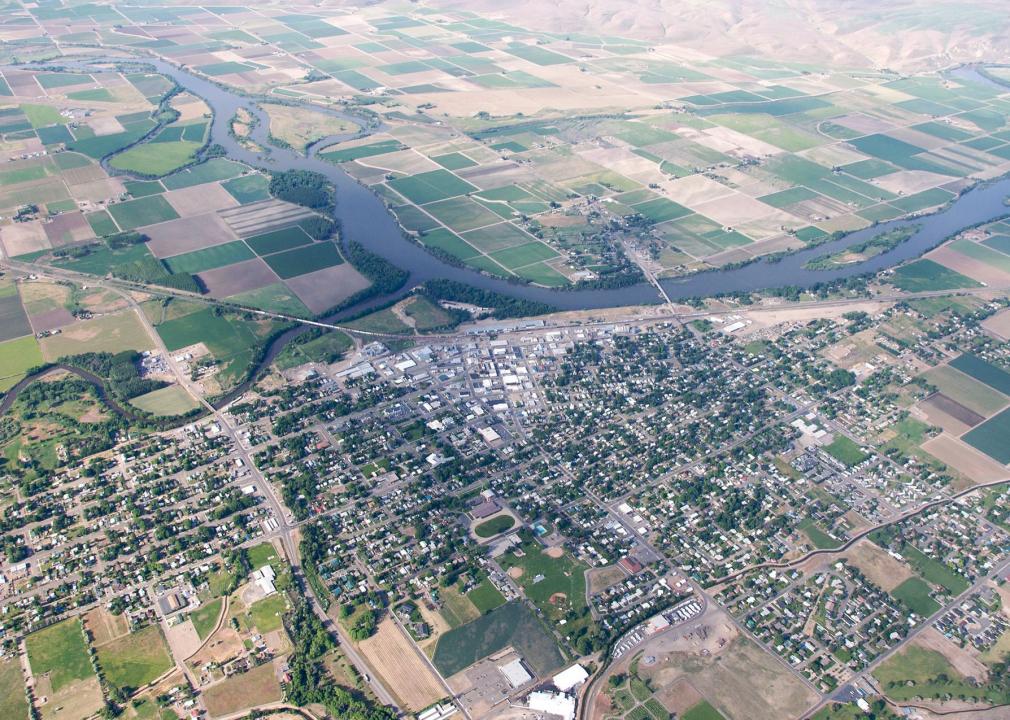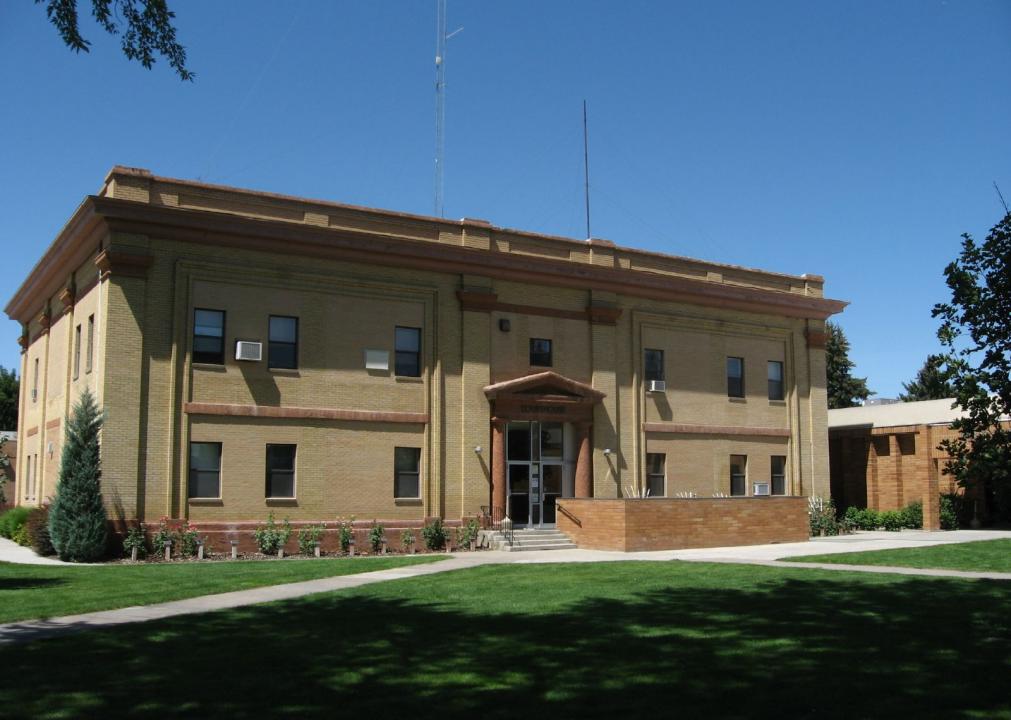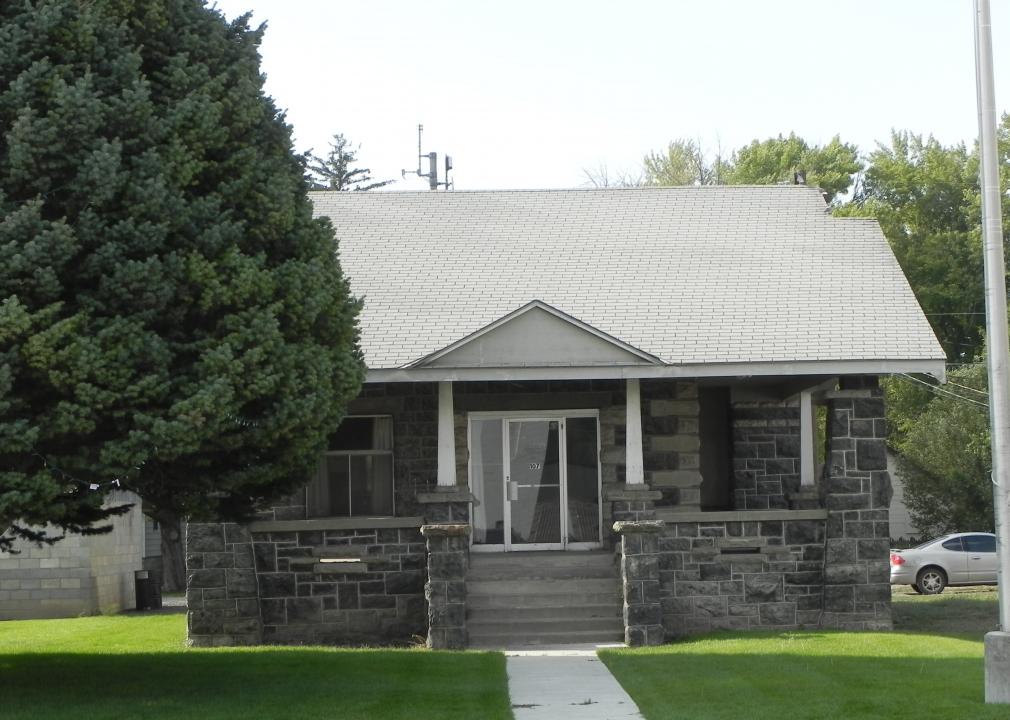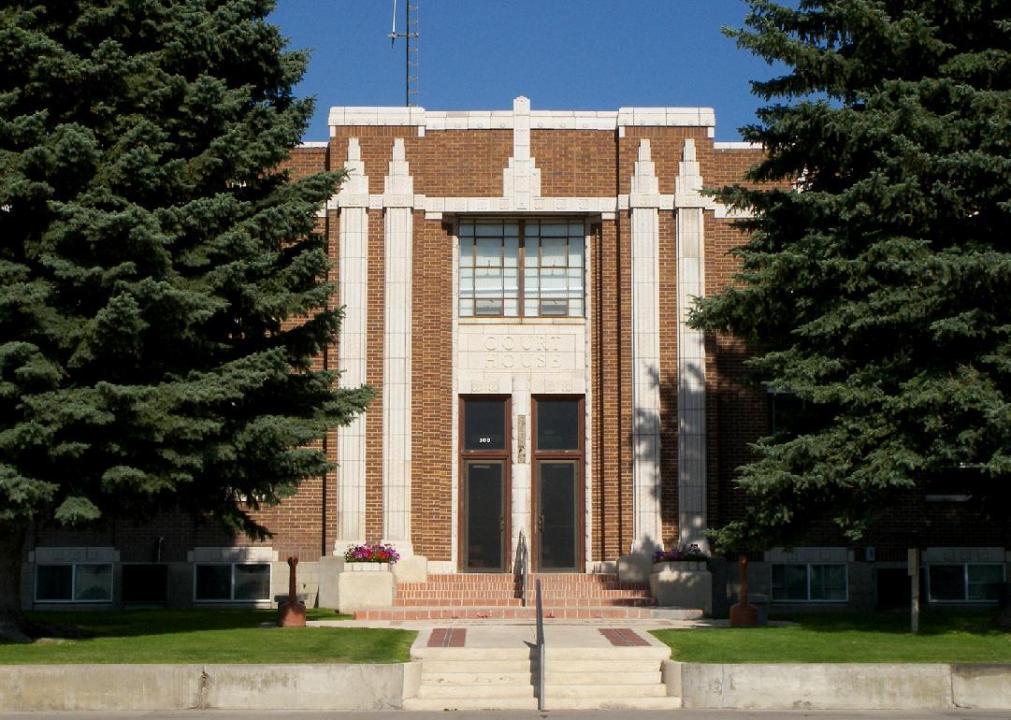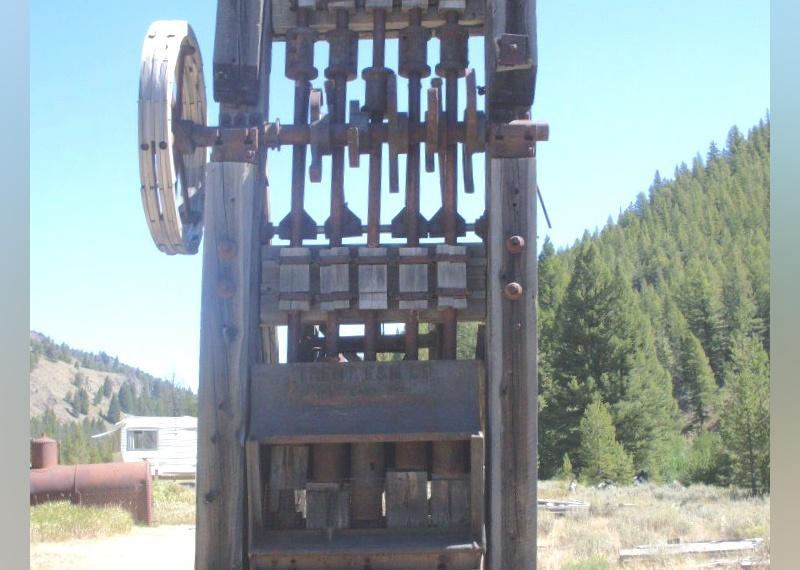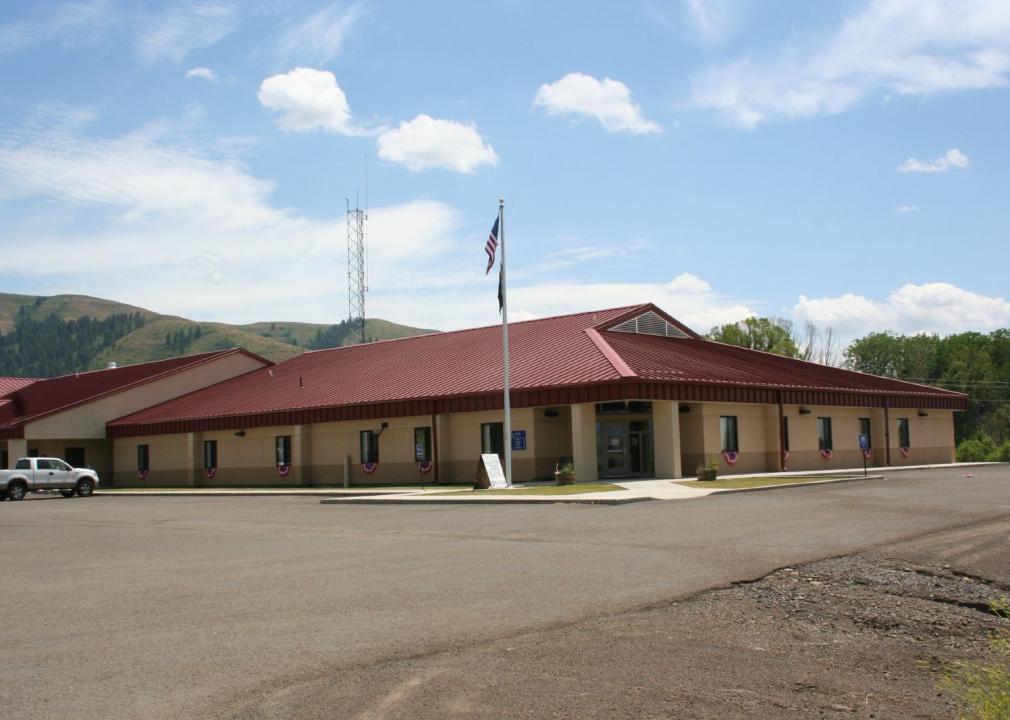Counties with the highest rate of food insecure children in Idaho
rustejunk // Wikimedia Commons
Counties with the highest rate of food insecure children in Idaho
Food insecurity is a widespread problem in the United States, with people experiencing food insecurity in every single county in the nation. The nonprofit Feeding America describes food insecurity as “a lack of consistent access to enough food for every person in a household to live an active, healthy life.”
Food insecurity hits children particularly hard. The USDA estimates that more than 5.5 million children lived in food-insecure households in 2021. Not having consistent access to enough food can affect cognitive abilities, overall health, moods, and attention spans—not to mention the psychological effects of living with scarcity.
Stacker compiled a list of counties in Idaho with the highest rate of food insecure children using data from Feeding America. Counties are ranked by highest percent of children with food insecurity as of 2020. Idaho has a child food insecurity rate of 10.5%, which ranks #7 lowest among all states.
States with the highest rate of food insecure children
#1. Louisiana: 21.5%
#2. New Mexico: 20.5%
#3. Mississippi: 20.4%
#4. Alabama: 19.8%
#5. Arkansas: 19.7%
States with the lowest rate of food insecure children
#1. North Dakota: 8.1%
#2. Massachusetts: 8.8%
#3. New Jersey: 9.0%
#4. Minnesota: 9.3%
#5. New Hampshire: 9.5%
Read on to see where food insecurity is most prevalent in Idaho.
![]()
Lowjumpingfrog // Wikimedia Commons
#44. Teton County
– Child food insecurity rate: 6.2% (180 total)
— 9.9% lower than national average
– Food insecurity rate: 6.2% (730 total)
— 5.6% lower than national average
– Annual food budget shortfall: $580,000
— Cost per meal: $4.94
Bathlander // Wikimedia Commons
#43. Jefferson County
– Child food insecurity rate: 7.1% (700 total)
— 9.0% lower than national average
– Food insecurity rate: 6.0% (1,760 total)
— 5.8% lower than national average
– Annual food budget shortfall: $978,000
— Cost per meal: $3.45
Dschwen // Wikimedia Commons
#42. Caribou County
– Child food insecurity rate: 7.9% (160 total)
— 8.2% lower than national average
– Food insecurity rate: 7.0% (490 total)
— 4.8% lower than national average
– Annual food budget shortfall: $268,000
— Cost per meal: $3.40
Ken Lund // Wikimedia Commons
#41. Franklin County
– Child food insecurity rate: 8.2% (360 total)
— 7.9% lower than national average
– Food insecurity rate: 7.2% (990 total)
— 4.6% lower than national average
– Annual food budget shortfall: $490,000
— Cost per meal: $3.08
Charles Knowles // Shutterstock
#40. Ada County
– Child food insecurity rate: 8.4% (9,270 total)
— 7.7% lower than national average
– Food insecurity rate: 7.8% (36,850 total)
— 4.0% lower than national average
– Annual food budget shortfall: $22,912,000
— Cost per meal: $3.86
Jcarr29 // Wikimedia Commons
#39. Bonneville County
– Child food insecurity rate: 9.4% (3,400 total)
— 6.7% lower than national average
– Food insecurity rate: 8.1% (9,450 total)
— 3.7% lower than national average
– Annual food budget shortfall: $4,900,000
— Cost per meal: $3.22
Ken Lund // Wikimedia Commons
#38. Madison County
– Child food insecurity rate: 10.3% (1,100 total)
— 5.8% lower than national average
– Food insecurity rate: 10.8% (4,280 total)
— 1.0% lower than national average
– Annual food budget shortfall: $2,194,000
— Cost per meal: $3.18
Apstrinka // Wikimedia Commons
#37. Latah County
– Child food insecurity rate: 10.6% (780 total)
— 5.5% lower than national average
– Food insecurity rate: 10.5% (4,200 total)
— 1.3% lower than national average
– Annual food budget shortfall: $2,438,000
— Cost per meal: $3.61
Tricia Simpson // Wikimedia Commons
#36. Oneida County
– Child food insecurity rate: 10.6% (130 total)
— 5.5% lower than national average
– Food insecurity rate: 9.6% (420 total)
— 2.2% lower than national average
– Annual food budget shortfall: $208,000
— Cost per meal: $3.08
KRRK // Wikimedia Commons
#35. Bingham County
– Child food insecurity rate: 10.7% (1,520 total)
— 5.4% lower than national average
– Food insecurity rate: 8.4% (3,900 total)
— 3.4% lower than national average
– Annual food budget shortfall: $1,901,000
— Cost per meal: $3.03
wilson44691 // Wikimedia Commons
#34. Cassia County
– Child food insecurity rate: 10.7% (810 total)
— 5.4% lower than national average
– Food insecurity rate: 8.1% (1,940 total)
— 3.7% lower than national average
– Annual food budget shortfall: $1,037,000
— Cost per meal: $3.32
Kristen Taylor // Wikimedia Commons
#33. Clark County
– Child food insecurity rate: 11.1% (30 total)
— 5.0% lower than national average
– Food insecurity rate: 6.8% (60 total)
— 5.0% lower than national average
– Annual food budget shortfall: $31,000
— Cost per meal: $3.18
Karthikc123 // Wikimedia Commons
#32. Valley County
– Child food insecurity rate: 11.1% (210 total)
— 5.0% lower than national average
– Food insecurity rate: 9.3% (1,030 total)
— 2.5% lower than national average
– Annual food budget shortfall: $657,000
— Cost per meal: $3.96
Aualliso // Wikimedia Commons
#31. Fremont County
– Child food insecurity rate: 11.7% (390 total)
— 4.4% lower than national average
– Food insecurity rate: 9.0% (1,180 total)
— 2.8% lower than national average
– Annual food budget shortfall: $605,000
— Cost per meal: $3.18
JERRYE & ROY KLOTZ MD // Wikimedia Commons
#30. Power County
– Child food insecurity rate: 12.0% (280 total)
— 4.1% lower than national average
– Food insecurity rate: 8.6% (650 total)
— 3.2% lower than national average
– Annual food budget shortfall: $356,000
— Cost per meal: $3.40

Michlaovic // Wikimedia
#29. Bannock County
– Child food insecurity rate: 12.4% (2,800 total)
— 3.7% lower than national average
– Food insecurity rate: 10.6% (9,170 total)
— 1.2% lower than national average
– Annual food budget shortfall: $5,024,000
— Cost per meal: $3.40
Dsdugan // Wikimedia Commons
#28. Nez Perce County
– Child food insecurity rate: 12.4% (1,070 total)
— 3.7% lower than national average
– Food insecurity rate: 10.5% (4,240 total)
— 1.3% lower than national average
– Annual food budget shortfall: $3,085,000
— Cost per meal: $4.52
Tricia Simpson // Wikimedia Commons
#27. Bear Lake County
– Child food insecurity rate: 12.5% (200 total)
— 3.6% lower than national average
– Food insecurity rate: 9.7% (590 total)
— 2.1% lower than national average
– Annual food budget shortfall: $292,000
— Cost per meal: $3.08
Ian Poellet // Wikimedia Commons
#26. Payette County
– Child food insecurity rate: 12.6% (780 total)
— 3.5% lower than national average
– Food insecurity rate: 10.0% (2,370 total)
— 1.8% lower than national average
– Annual food budget shortfall: $1,512,000
— Cost per meal: $3.96
Tamanoeconomico // Wikimedia Commons
#25. Canyon County
– Child food insecurity rate: 12.8% (8,130 total)
— 3.3% lower than national average
– Food insecurity rate: 9.3% (20,840 total)
— 2.5% lower than national average
– Annual food budget shortfall: $10,943,000
— Cost per meal: $3.26
Karthikc123 // Wikimedia Commons
#24. Twin Falls County
– Child food insecurity rate: 13.0% (3,090 total)
— 3.1% lower than national average
– Food insecurity rate: 9.9% (8,510 total)
— 1.9% lower than national average
– Annual food budget shortfall: $4,619,000
— Cost per meal: $3.37
NPS photo // Wikimedia Commons
#23. Gooding County
– Child food insecurity rate: 13.2% (550 total)
— 2.9% lower than national average
– Food insecurity rate: 9.8% (1,500 total)
— 2.0% lower than national average
– Annual food budget shortfall: $712,000
— Cost per meal: $2.95
Sam Beebe // Wikimedia Commons
#22. Washington County
– Child food insecurity rate: 13.5% (310 total)
— 2.6% lower than national average
– Food insecurity rate: 10.5% (1,070 total)
— 1.3% lower than national average
– Annual food budget shortfall: $683,000
— Cost per meal: $3.96
Antony-22 // Wikimedia Commons
#21. Kootenai County
– Child food insecurity rate: 13.6% (5,020 total)
— 2.5% lower than national average
– Food insecurity rate: 10.2% (16,420 total)
— 1.6% lower than national average
– Annual food budget shortfall: $9,409,000
— Cost per meal: $3.56
Larry D. Moore // Wikimedia Commons
#20. Elmore County
– Child food insecurity rate: 13.8% (940 total)
— 2.3% lower than national average
– Food insecurity rate: 11.4% (3,080 total)
— 0.4% lower than national average
– Annual food budget shortfall: $1,647,000
— Cost per meal: $3.32
Ken Lund // Wikimedia Commons
#19. Minidoka County
– Child food insecurity rate: 13.9% (830 total)
— 2.2% lower than national average
– Food insecurity rate: 9.5% (1,970 total)
— 2.3% lower than national average
– Annual food budget shortfall: $920,000
— Cost per meal: $2.90
Tom Young // Wikimedia Commons
#18. Lincoln County
– Child food insecurity rate: 14.5% (230 total)
— 1.6% lower than national average
– Food insecurity rate: 9.2% (490 total)
— 2.6% lower than national average
– Annual food budget shortfall: $232,000
— Cost per meal: $2.95
Larry D. Moore // Wikimedia Commons
#17. Jerome County
– Child food insecurity rate: 14.6% (1,080 total)
— 1.5% lower than national average
– Food insecurity rate: 9.4% (2,260 total)
— 2.4% lower than national average
– Annual food budget shortfall: $1,072,000
— Cost per meal: $2.95
Forest Service Northern Region from Missoula, MT, USA // Wikimedia Commons
#16. Idaho County
– Child food insecurity rate: 14.7% (470 total)
— 1.4% lower than national average
– Food insecurity rate: 12.0% (1,970 total)
— 0.2% higher than national average
– Annual food budget shortfall: $1,433,000
— Cost per meal: $4.52
John Stanton // Wikimedia Commons
#15. Lemhi County
– Child food insecurity rate: 14.7% (210 total)
— 1.4% lower than national average
– Food insecurity rate: 11.8% (940 total)
— 0.0% lower than national average
– Annual food budget shortfall: $673,000
— Cost per meal: $4.45
L’Aquatique // Wikimedia Commons
#14. Bonner County
– Child food insecurity rate: 14.8% (1,300 total)
— 1.3% lower than national average
– Food insecurity rate: 11.5% (5,160 total)
— 0.3% lower than national average
– Annual food budget shortfall: $2,842,000
— Cost per meal: $3.42
Squelle // Wikimedia Commons
#13. Butte County
– Child food insecurity rate: 14.9% (80 total)
— 1.2% lower than national average
– Food insecurity rate: 12.4% (320 total)
— 0.6% higher than national average
– Annual food budget shortfall: $251,000
— Cost per meal: $4.86
United States Department of Agriculture // Wikimedia Commons
#12. Owyhee County
– Child food insecurity rate: 15.3% (460 total)
— 0.8% lower than national average
– Food insecurity rate: 10.7% (1,260 total)
— 1.1% lower than national average
– Annual food budget shortfall: $662,000
— Cost per meal: $3.26
Cornellrockey04 // Wikimedia Commons
#11. Camas County
– Child food insecurity rate: 15.4% (40 total)
— 0.7% lower than national average
– Food insecurity rate: 10.9% (120 total)
— 0.9% lower than national average
– Annual food budget shortfall: $94,000
— Cost per meal: $4.86
Greg L. Wright // Wikimedia Commons
#10. Blaine County
– Child food insecurity rate: 16.1% (790 total)
— 0.0% lower than national average
– Food insecurity rate: 9.6% (2,180 total)
— 2.2% lower than national average
– Annual food budget shortfall: $1,707,000
— Cost per meal: $4.86
John D // Wikimedia Commons
#9. Gem County
– Child food insecurity rate: 16.6% (680 total)
— 0.5% higher than national average
– Food insecurity rate: 12.1% (2,160 total)
— 0.3% higher than national average
– Annual food budget shortfall: $1,134,000
— Cost per meal: $3.26
PdxCobra // Wikimedia Commons
#8. Boise County
– Child food insecurity rate: 16.7% (200 total)
— 0.6% higher than national average
– Food insecurity rate: 11.2% (860 total)
— 0.6% lower than national average
– Annual food budget shortfall: $535,000
— Cost per meal: $3.86
Ian Poellet // Wikimedia Commons
#7. Benewah County
– Child food insecurity rate: 17.0% (360 total)
— 0.9% higher than national average
– Food insecurity rate: 12.6% (1,160 total)
— 0.8% higher than national average
– Annual food budget shortfall: $665,000
— Cost per meal: $3.56
Jon Roanhaus // Wikimedia Commons
#6. Clearwater County
– Child food insecurity rate: 17.0% (240 total)
— 0.9% higher than national average
– Food insecurity rate: 12.8% (1,120 total)
— 1.0% higher than national average
– Annual food budget shortfall: $815,000
— Cost per meal: $4.52
tinosa // Wikimedia Commons
#5. Custer County
– Child food insecurity rate: 18.5% (140 total)
— 2.4% higher than national average
– Food insecurity rate: 13.6% (570 total)
— 1.8% higher than national average
– Annual food budget shortfall: $446,000
— Cost per meal: $4.86
Federal Highway Administration // Wikimedia Commons
#4. Boundary County
– Child food insecurity rate: 18.6% (530 total)
— 2.5% higher than national average
– Food insecurity rate: 13.4% (1,630 total)
— 1.6% higher than national average
– Annual food budget shortfall: $898,000
— Cost per meal: $3.42
Ken Lund // Wikimedia Commons
#3. Adams County
– Child food insecurity rate: 18.9% (130 total)
— 2.8% higher than national average
– Food insecurity rate: 13.7% (580 total)
— 1.9% higher than national average
– Annual food budget shortfall: $370,000
— Cost per meal: $3.96
rustejunk // Wikimedia Commons
#2. Lewis County
– Child food insecurity rate: 20.2% (170 total)
— 4.1% higher than national average
– Food insecurity rate: 14.7% (570 total)
— 2.9% higher than national average
– Annual food budget shortfall: $415,000
— Cost per meal: $4.52

jfergusonphotos // Shutterstock
#1. Shoshone County
– Child food insecurity rate: 20.7% (530 total)
— 4.6% higher than national average
– Food insecurity rate: 15.7% (1,990 total)
— 3.9% higher than national average
– Annual food budget shortfall: $1,140,000
— Cost per meal: $3.56


